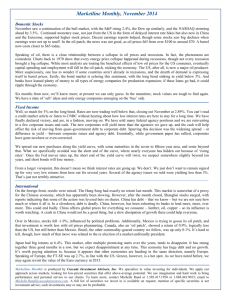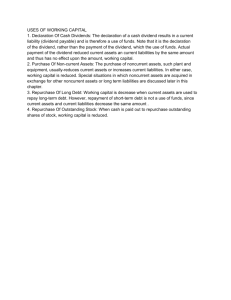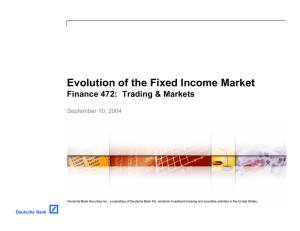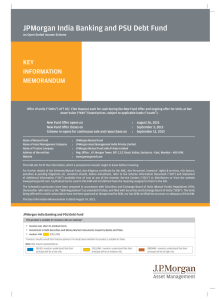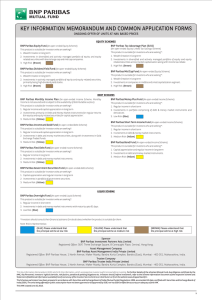a. Finance Finance is the source through which you provide
advertisement
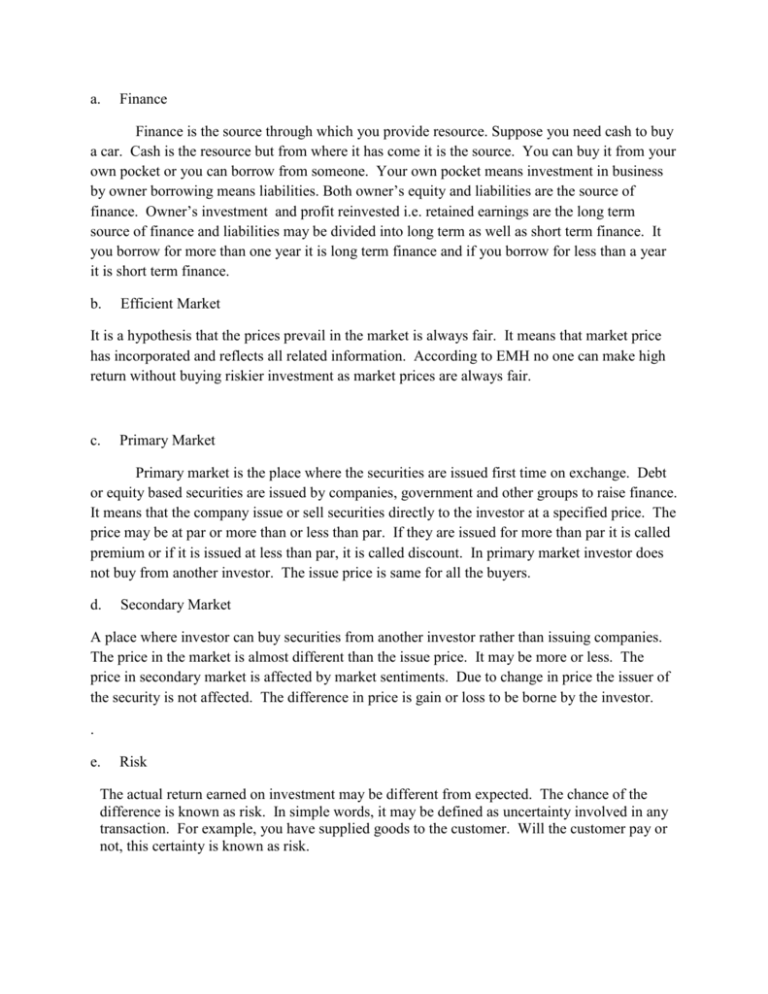
a. Finance Finance is the source through which you provide resource. Suppose you need cash to buy a car. Cash is the resource but from where it has come it is the source. You can buy it from your own pocket or you can borrow from someone. Your own pocket means investment in business by owner borrowing means liabilities. Both owner’s equity and liabilities are the source of finance. Owner’s investment and profit reinvested i.e. retained earnings are the long term source of finance and liabilities may be divided into long term as well as short term finance. It you borrow for more than one year it is long term finance and if you borrow for less than a year it is short term finance. b. Efficient Market It is a hypothesis that the prices prevail in the market is always fair. It means that market price has incorporated and reflects all related information. According to EMH no one can make high return without buying riskier investment as market prices are always fair. c. Primary Market Primary market is the place where the securities are issued first time on exchange. Debt or equity based securities are issued by companies, government and other groups to raise finance. It means that the company issue or sell securities directly to the investor at a specified price. The price may be at par or more than or less than par. If they are issued for more than par it is called premium or if it is issued at less than par, it is called discount. In primary market investor does not buy from another investor. The issue price is same for all the buyers. d. Secondary Market A place where investor can buy securities from another investor rather than issuing companies. The price in the market is almost different than the issue price. It may be more or less. The price in secondary market is affected by market sentiments. Due to change in price the issuer of the security is not affected. The difference in price is gain or loss to be borne by the investor. . e. Risk The actual return earned on investment may be different from expected. The chance of the difference is known as risk. In simple words, it may be defined as uncertainty involved in any transaction. For example, you have supplied goods to the customer. Will the customer pay or not, this certainty is known as risk. The risk may be divided into different categories, they are: market risk, credit risk and operational risk. Return on investment is associated with risk attach to that investment. There is a trade off between risk and return. If risk is high the return is high if risk is low the return is low. f. Security Stock which represent right of ownership and bond which represent a debt agreement are known as securities. It means the instrument which represents right on the profit which is generated by the use of assets of business is called security. Some securities are interest based and some are dividend based securities. Some of the securities are common stock, preferred stock, bonds, notes, debenture, option, future, swap, right, warrant or any other financial assets. Security is the source of finance who issued it and source of investment who buys it. g. Stock Stock represents ownership in the business and a claim on part of the company’s assets and earnings. It is an instrument normally having a face value. Normally the stocks do not have any maturity date, it means they are irredeemable. Stocks may be classified into two categories; they are common stock and preferred stock. Both are dividend based. Rate of dividend is fixed for preferred stock and not fixed for common stock. Normally, preferred stocks do not have voting rights whereas common stocks do have voting rights. Preferred stock holder do have higher claim on the assets and earnings as compare to common stocks h. Bond It is a debt instrument, which describes the amount loaned, the rate of interest, maturity date and mode of payment of interest and principal. It is interest based security, therefore falls into the categories of fixed income securities. Company has to pay interest either company makes profit or loss. It is issued for longer period than one year; therefore it falls into the category of long term liability and one of the sources of long term finance. Company may attach different option with their bonds, e.g. convertible, callable etc. i. Capital Capital is known as amount invested by the owner of the business. If it is sole proprietor and partnerships the amount invested by owner or owners of the business. In case of corporation amount invested by stockholder i.e. owner of the business in the form of common stock and preferred stock. j. Debt It is an obligation to be paid by the business. It is also knows as liabilities. It shows the money borrowed. If it has been borrowed for more than a year it is called long term debt otherwise it is called short term debt. It also represents one of the sources of finance available. Interest is to be paid on debt, which may be treated as expenses for tax purpose. It means tax shield is available on all kinds of debt. Loans, notes payable, bonds and capital lease are some of the example of debt. k. Yield Rate of returned based on market price is called yield. For example, if an investor has bought shares of $10 par and company declares dividend of 10% in cash and still the market value is at par. IT means that yield earned on share is equal to dividend declared. Now if market price is different from par, say it is $20, now dividend declared is same but dividend yield is 5% (1/20) . l. Rate of Return Any profit or loss has been made for a specified period on investment is called the profit or loss in $ on your investment and when it is converted into percentage it is called rate of return. For example, you have made an investment of $10,000 at the start of the year and at the end of the year it becomes $12000. Your return in terms of $ for one year is $2000 and in terms of percentage it is (2000/10000) x 100 = 20% per annum is your rate of return. m. Return on Investment Generally speaking any profit or loss made on investment is called return on investment. It is just like rate of return. Technically speaking, it is a kind of ratio which describes how the profitability of the company is measured. Normally, net income is divided by total assets. For example, ABC Company has profit after tax for year equal to $150 million and total assets are $1500 million, it means return on investment is 10%. Sometime it has been calculated like this net income + interest expenses/long term debt + shareholders’ equity. n. Cash Flow When revenues or cost are received or paid in cash it is called cash flow. Normally, income statement is based on revenue earned and expenses incurred basis whether they have been paid or not or received or not. But in cash flow statement they showed as cash inflows and cash outflows at the time of receipt or payment in real terms. Normally it is divided into three categories: i Cash flows from operating activities. It comprises of revenues received during the period in cash and expenses incurred during the period in cash related to the operation of the business. ii Cash flows from investing activities. It comprises of buying and selling of fixed assets and other investment. iii Cash flows from financing activities. It describes the sources from where the organization has generated long term finances. It includes both borrowing in the form of long term debt and issuance of common stock and preferred stock.

